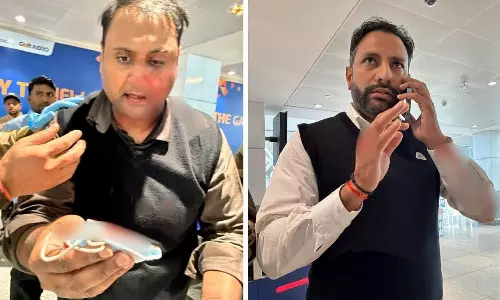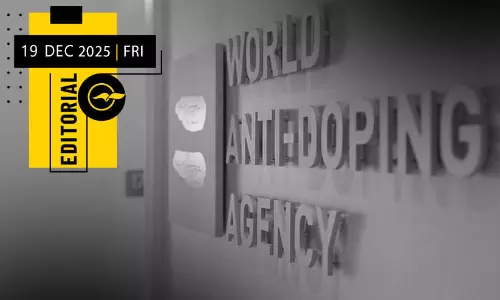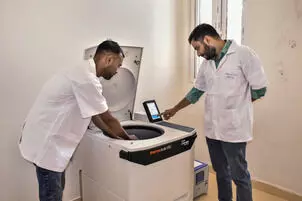
Indian researchers working on treatment for rare genetic disorder DMD
text_fieldsNew Delhi: Duchenne muscular dystrophy is a rare and fatal genetic disorder that affects more than 5 lakh people in India. Researchers there are working to create a treatment that is both effective and affordable. Due to changes in a protein called "dystrophin," which aids in maintaining healthy muscle cells, Duchenne muscular dystrophy (DMD) is the most prevalent and fatal type of muscular dystrophy. DMD is characterised by progressive muscle degeneration and weakness. The illness is primarily observed in boys, though it can occasionally affect girls as well.
The current therapeutic options available to treat DMD are minimal and highly expensive treatment with costs shooting up to Rs 2-3 crore per child a year and are mostly imported from abroad, accelerating dosing costs and putting them out of reach for most families.
The Indian Institute of Technology (IIT), Jodhpur has established a research centre for DMD in collaboration with Dystrophy Annihilation Research Trust (DART), Bengaluru and the All India Institute of Medical Sciences (AIIMS) Jodhpur. The centre aims to develop affordable therapeutics for this rare and incurable genetic disorder.
According to Surajit Ghosh, Dean, of Research and Development, IIT Jodhpur, DMD is an X-linked recessive muscular dystrophy affecting roughly one in 3,500 boys, which causes gradual loss of muscle tissue and function eventually leading to wheelchair dependency at approximately the age of 12 years, the requirement for assisted ventilation at approximately the age of 20 years and eventually premature death.
“Currently, there is no cure for DMD, but improvements in integrative treatment can slow down the disease progression and thereby, extend the life expectancy of DMD patients. Patients with DMD have different forms of mutations at varying positions of the protein, resulting in the production of functionally compromised dystrophin ORF,” Ghosh told PTI.
“Despite its severity in terms of systemic muscle impairment culminating into multi-organ failure and death, this disease is so far neglected due to a lack of proper theranostic tools for in-time diagnosis and treatment. The primary goal of our team is to develop two therapeutic leads for clinical trials on high priority,” he added.
According to scientists, muscle weakness is the principal symptom of DMD. It can begin as early as age 2 or 3, first affecting the proximal muscles (those close to the core of the body) and later affecting the distal limb muscles (those close to the extremities). Usually, the lower external muscles are affected before the upper external muscles. The affected child might have difficulty jumping, running, and walking.
Other symptoms include enlargement of calves, a waddling gait, and lumbar lordosis (an inward curve of the spine). Later on, the heart and respiratory muscles are affected as well. Progressive weakness and scoliosis result in impaired pulmonary function, which can eventually cause acute respiratory failure.
The researchers are working on affordable therapeutics for DMD and enhancing the efficacy of Antisense Oligonucleotide (AON)-based therapeutics.
According to Arun Shastry, Chief Scientific Officer, DART, Bengaluru, the AON-based therapeutics’ idea is to hide or mask specific exons (a segment of a DNA or RNA molecule containing information coding for a protein) in a gene sequence.
“In DMD patients, one or more exons can be masked with specific molecules called AON or molecular patches. Due to these challenges, DMD patients need personalised medicine. We have made significant progress in the development of a generic version of a utrophin modulator. Further validation in an animal model will be initiated soon,” he told PTI.
“In addition, the Duchenne Muscular DystrophyDrugs Controller General of India (DCGI) has given us a go-ahead to conduct a multicentric clinical trial on Antisense oligonucleotide (AON) based exon skipping in DMD patients. Currently, the research team is also working on the reduction of AON-based therapeutic dose through new molecular tags,” added Shastry.
Until recently, boys with DMD usually did not survive much beyond their teen years. However, with advances in cardiac and respiratory care, life expectancy is increasing.
With PTI inputs























